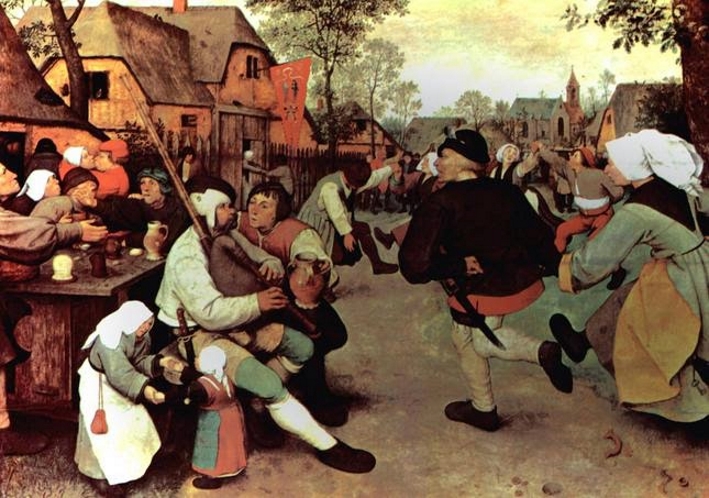Lars Garshol has an interesting post on a question that has bothered me for the last four years: How sour were pre-20th century beers? His post is well worth a read because he tackles it from a few angles. The portion I’m interested in, though, is the survey of historical materials, which often indicate that 16th – 19th century beers were not soured. For example, Lars cites a typical 16th century Swedish account by Olaus Magnus, an archbishop:
He describes both sweet and sour wines, but of beer he says that people brew it sweet or bitter according to preference. He says winter water is the best, as it never makes the beer go sour. Today we can see what was really going on, but he was right that beer was less likely to go sour in winter, due to lower temperatures. He says winter water is used in the brewing of Danzig beer, “the noblest and healthiest beer”. It’s clear from the text that to Olaus Magnus, beer is a sweet or bitter drink, and mainly sour by accident.
 So here’s the thing: I don’t trust Magnus. The problem is that language is not precise, especially in describing flavor, which is by necessity always relative. We don’t have precise language for flavors, except to compare them to other things. Flavor descriptions build on shared understandings of the way known things taste, and we use those understandings when we describe related flavors. When we say hops taste “like citrus”, we mean to say that relative to other hoppy flavors, they have a few molecules that remind us of orange. Originally, though, hops like Cascade were so exotic and bizarre when compared to European hops that they weren’t always described as citrusy. People were using a different baseline for hop flavor in the 1970s.
So here’s the thing: I don’t trust Magnus. The problem is that language is not precise, especially in describing flavor, which is by necessity always relative. We don’t have precise language for flavors, except to compare them to other things. Flavor descriptions build on shared understandings of the way known things taste, and we use those understandings when we describe related flavors. When we say hops taste “like citrus”, we mean to say that relative to other hoppy flavors, they have a few molecules that remind us of orange. Originally, though, hops like Cascade were so exotic and bizarre when compared to European hops that they weren’t always described as citrusy. People were using a different baseline for hop flavor in the 1970s.
Similarly, if the accepted baseline for beer was always a bit tart (by modern standards), then all the terms writers used would be relative to that reality. We have zero-level thresholds for “sour” because we can control microbiological activity. Did 19th century writers share that threshold? My strong suspicion is no; therefore, beer that was “sour” was relatively sour – that is, sourer than the baseline. Let me draw your attention to the 19th century writer Georges Lacambre and his famous Traité Complet de la Fabrication des Bières. He illustrates the point.
In the section on the old style of beer called uytzet, he quotes the work of another writer who had written about chemical analyses done on uytzet. That writer, Wauters, described double uytzet as “the most delicate and sweetest of all known beers”. What did he mean by “sweet”? Fortunately, we have the actual analysis as well, which measured things like “resinous grain”, “dry mucilage”, and “vinegar” (acetic acid). In 48 ounces of beer measured, 3 ounces of which were acetic acid. (The 48-ounce figure come from a conversion Randy Mosher did, which is sadly no longer online.) Lacambre comments: “However, we agree that Mr. Wauters must be accustomed to such a beer to find it so good, as it contains so much vinegar and so little alcohol.” Even then, language was imprecise enough that writers didn’t agree on meaning. You see this throughout Lacambre’s book, where he dutifully explains what locals think of their beers, then savages them with his own less-admiring descriptions.
When I read sources like Lacambre, I read “sweet” as “not yet very sour”, or “young”. It’s not the modern definition of sweet, which means “not hoppy”. When writers of this era – and earlier writers, like Magnus – mention “sour”, I think they mean what we would call spoiled. It’s why they talk about winter and summer brewing – when we know very well thanks to lambic-brewing that winter beers can get very sour indeed without spoiling.
As a final data point, it’s useful to turn to Louis Pasteur himself. In his seminal work on yeast, Etudes sur la Bière (translated into the English as Studies on Fermentation), he recommended the lager-brewing practice, because ale-brewing so often resulted in soured beer. “How is it that the use of ice and yeast operating at a low temperature [in lager brewing] so greatly facilitates the preservation of our beer and enables us to secure such striking advantages? The explanation is simple: the diseased ferments, which we have pointed out, rarely appear at a lower temperature than 10° C (50° F), and at that temperature their germs cease to be active.” This further suggests to me that the ales must have been either sour or had such a short window before they got sour that he discouraged their manufacture. And indeed, his research was one of the reasons lager-brewing (along with technological advancements) took off at such a rapid clip.
Without being able to taste these old beers ourselves, we can’t know the microbiology of pre-20th century beers based on the descriptions of contemporary writers from earlier periods. But I would encourage readers to exercise a healthy scepticism. Our assumptions about the way beer tastes is very unlikely to reflect their assumptions – and subsequent descriptions are going to confuse modern minds.
Author: Jeff Alworth
re-blogged and published from Beervana
with kind permission from the author.

Hinterlasse jetzt einen Kommentar